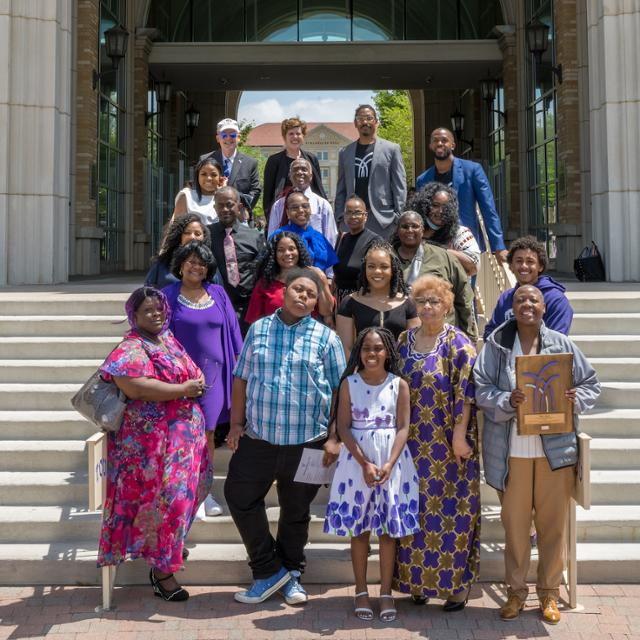They would have been up before sunrise, readying the campus for students and faculty, making sure that the AddRan College for Men and Women was comfortable and safe for another day of learning. But for all their loving attention to detail at this TCU predecessor in Thorp Spring, Texas, Charley and Kate Thorp could not attend classes in the late 1800s because they were Black.
Now, some 150 years later, this formerly enslaved couple’s contributions to TCU history have been recognized, and their legacies will live on as they become subjects for TCU’s Portrait Project.
The Portrait Project, a collaboration of the Office of Diversity & Inclusion and the Office of the Chancellor and President, commemorates historically marginalized and underrepresented members of TCU. Honorees, like the Thorps, are selected to highlight the inspiring but often untold stories of TCU.
The Thorp portraits will be unveiled Oct. 24 during Homecoming Weekend at a public event.
“When you look at the portraits that line an institution like a university, you see an absence of diversity,” said Marcellis Perkins, chair of the project, doctoral student in the College of Education and current research assistant in the Office of the Chancellor and President. “But those may not match all the identities of those who have influenced it. The Portrait Project diversifies the narrative of those individuals who contributed to TCU, and Charley and Kate Thorp are two who contributed greatly.”
Thanks to research by Sylviane Greensword, assistant professor of professional practice in the John V. Roach Honors College, and the Race & Reconciliation Initiative, more is being learned about Charley and Kate. Greensword and her team learned that Charley was born into slavery in the 1850s and was enslaved by Pleasant Thorp, who founded Thorp Spring.
When the Civil War ended in 1865, there was not a hard stop to slavery. Post-emancipation, Charley remained in Thorp Spring, where he married Kate and they had seven children. Census records show that Kate could read, but Charley could neither read nor write.
As there are no verified photographs of Charley and Kate on which to base their portraits, there was a challenge to finding an artist who could bring the project to life. The Portrait Project committee selected Letitia Huckaby, a Fort Worth resident and the 2022 Texas Artist of the Year, who has exhibited her work nationally and internationally.
Because Greensword previously traced the children, grandchildren and great-grandchildren of Charley and Kate, she was able to identify their living descendants. Huckaby photographed two of them to create silhouette portraits that offer a creative interpretation of the Thorps’ legacy.
Part of the Portrait Project’s mission is to invite community participation. In addition to the unveiling ceremony, which will include Greensword, the artist and Thorp family members, the Modern Art Museum of Fort Worth this winter will host a cross-collaboration exhibit of Huckaby’s work featuring 12 portraits of the Thorp living descendants.
“The portraits are one way we can thank Charley and Kate for their contributions to TCU and bring full circle the role Black people played in the university,” said Perkins. “I feel very honored to have been given the responsibility to carry out a project that helps bring those from the background to the forefront and keep history alive.”
See details to attend the TCU unveiling and learn more about the exhibit at The Modern.
